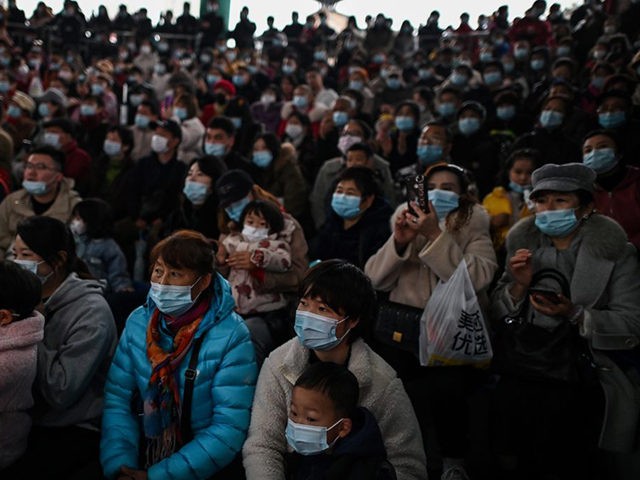Chinese state media admitted Tuesday that a new wave of coronavirus infections, previously depicted as a small cluster of cases in a single city, is spreading across the country.
China’s state-run Global Times reported Tuesday that the city of Jinzhong in Shanxi province discovered “two asymptomatic cases” imported from the city of Shijiazhuang in neighboring Hebei province.
Shijiazhuang, a large city less than 200 miles from Beijing, began imposing strict emergency measures against the coronavirus outbreak last week, including bans on both incoming and outgoing travel.
According to the Global Times, Jinzhong has implemented emergency measures similar to those in Shijiazhuang, and other cities and villages across Shanxi province are also reporting “asymptomatic coronavirus cases” and imposing testing requirements and travel bans.
Another Global Times report Tuesday described a Chinese coronavirus outbreak spreading across “locked-down Wangkui county” in the Heilongjiang province of northeastern China:
The city of Qiqihar reported seven new cases, including three patients who have been to Wangkui county. Yichun also found one positive case after testing all recent returnees from the county.
As of Tuesday, the outbreak in Wangkui has spread to three places.
In addition to Qiqihar and Yichun, Changchun in Northeast China’s Jilin Province neighboring Heilongjiang, also detected seven relevant cases. Of them, four patients were diagnosed as asymptomatic coronavirus carriers after traveling to Wangkui. Three of their close contacts were newly found to have been infected on Tuesday.
The new outbreak reaches all the way to Wuhan, ground zero for the worldwide pandemic, which is located in Hubei province. Wuhan health officials announced on Tuesday that 548 people have been quarantined after coming into close contact with infected people. Authorities allegedly traced 95 more contactees to Beijing, which is reportedly testing thousands of residents in certain districts.
“Xi’an, the capital of Northwest China’s Shaanxi Province, said on Monday that it had quarantined nine close contacts of a COVID-19 [Chinese coronavirus] patient reported in Hebei, as well as 1,997 people who had close contact with the nine people,” the Global Times wrote.
Chinese health officials are placing a great emphasis on “asymptomatic carriers” as the cause of the outbreak alarm while insisting that a handful of “super spreaders” are responsible for most of the cases.
A Monday article in the Global Times placed much of the blame on small villages, even though the big stories last week were about coronavirus cases spreading through massive cities like Shijiazhuang:
Chinese health experts warned that the coronavirus spreading in China appears to be more infectious and transmissible, and asymptomatic infections, especially silent infections in villages, has become a new and big challenge for China, judging from the ongoing Shijiazhuang outbreak and previous outbreak in Northwest China’s Xinjiang Uygur Autonomous Region.
A weak and slow COVID-19 response at the grassroots level, which includes a failed surveillance and reporting system in villages, has spawned the recent domestic cluster infections, experts said.
Overall, Monday was portrayed as the worst day for the coronavirus in China since July, with 103 confirmed cases. All of these Chinese state media reports placed great emphasis on the dangers posed by asymptomatic patients and “silent virus carriers.”
“The epidemic will affect regions during the Spring Festival holiday, which falls in February, and will see tightened restrictions on the movement of local people in these regions. But experts believe that the recent multiple outbreaks in China are controllable and will not lead to a second national outbreak, as China has formed a complete and effective response mechanism,” the Global Times asserted.
CNBC noted on Tuesday that China’s “spike” of coronavirus cases, and the rapidly growing states of emergency declared in several provinces, coincide with the arrival of the World Health Organization’s (W.H.O.) coronavirus investigation team.
The spike is also occurring on the eve of China’s Spring Festival holiday season, raising concerns about further spreading of the virus and lost revenue if travel, tourism, and industry are shut down.
“The central government is encouraging people to stay put during the Lunar New Year holiday that officially falls in mid-February this year,” CNBC reported.

COMMENTS
Please let us know if you're having issues with commenting.